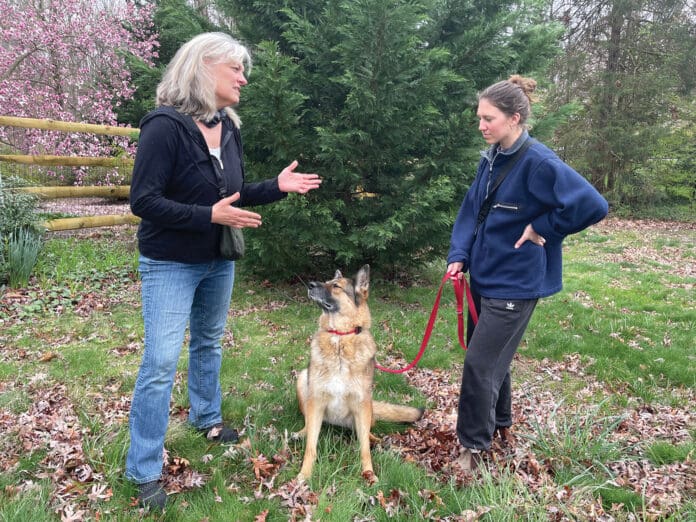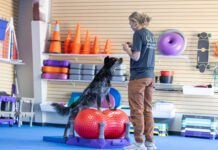Often, during the first dog-training lesson with me, an owner will joke: “Hahaha, it looks like I’m the one who needs the training!” They might be kidding, but they’re absorbing the most fundamental lesson I want to teach them: It’s their skill at communicating with their dog that will help them live happily with the dog for the rest of the dog’s life, not mine!
Of course, having a professional trainer work with a dog will provide a giant jump-start to the dog’s learning. But if the human end of that team does not learn alongside the dog, any progress will fade away.
Learning the Technique
After their dog returns from training with an instructor, clients often come to the conclusion that their dog is “stubborn,” saying that he just won’t listen to them at home. The truth is that the owner is not speaking that new language – the one the dog just learned in his lesson – well enough to be understood.
Technique matters! That’s why a great dog trainer will spend a lot of time working with the human on body language, hand signals, treat delivery, and timing. If you are a little annoyed that your trainer is focusing on you during that hour rather than teaching the dog something, remember this: That kind of session empowers an owner forever.
Contrast this with sessions in which the trainer simply shows off the amazing behavior he can get from the dog. This is terrific job security for him, since he will have to be asked back again and again!
Looking Beyond Cues
Folks tend to think about “getting a dog trained” as if it’s a finite process with a beginning and an end. It may sound appealing to outsource that entirely to a professional, but you’ll likely be disappointed if you do that. The classic cues your dog can learn from a trainer are only the beginning of shaping a dog who’s great to live with.
This is another reason that the best trainers will spend a lot of time in a session simply talking to an owner. The behavior issues that send many folks to trainers can’t be solved by insisting on a stronger response to “commands.” A great trainer will lead you to a better understanding of what’s prompting that behavior in the first place. That, in turn, leads to true solutions that work both for you and your dog. Brainstorming about observation, management, and enrichment isn’t what people have been taught to look for in a dog training session, but it’s the gold-star approach that actually works.
Understanding Cultivates Bonding
Dogs tend to adore the humans who speak their language – the ones who patiently and clearly show them the ropes here on Planet Human and don’t seem angry at them for being dogs. The reason I want to get you up and running as the lifelong trainer of your dog is that I want to see that incredible bond developing between you and your dog – not me and your dog!






